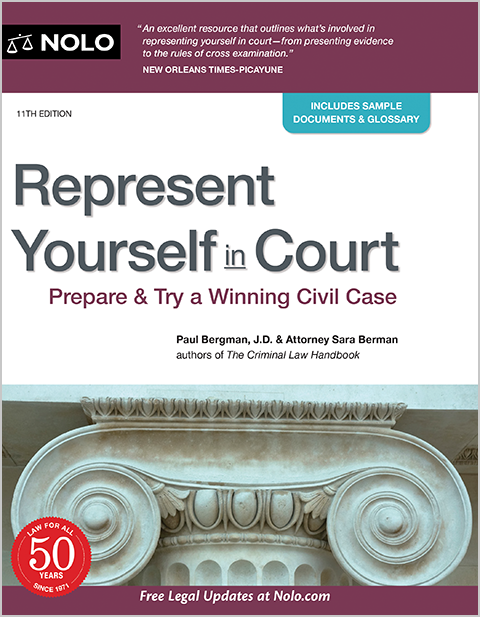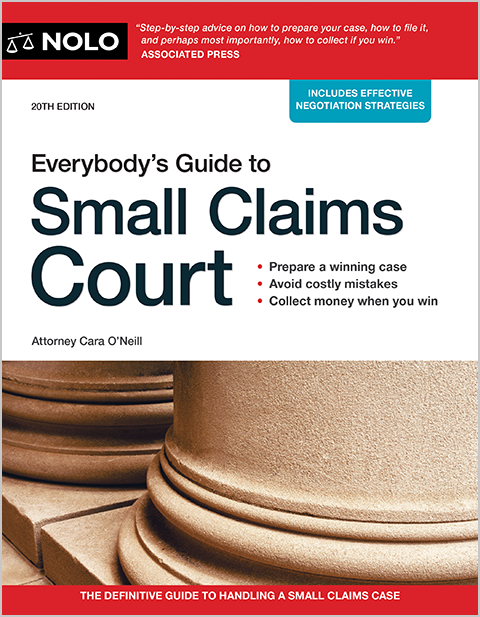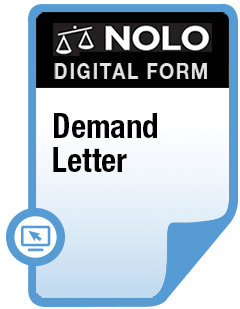You got an Ohio money judgment. Now it's time to collect. We explain how to record Ohio judgment liens, collect on a lien, extend your judgment, and more.
You went to court and got a judgment that says you're entitled to money from the party you sued, now called a "judgment debtor." What comes next? How can you—the judgment creditor—collect the money you're due? That's the focus of this article.
One way to collect is by putting judgment liens on the judgment debtor's Ohio property. After a quick review of how judgment liens differ from judgments, we'll turn our attention to the specifics of Ohio law. In particular, we cover:
- the kinds of property subject to Ohio judgment liens
- how you put judgment liens on Ohio property
- how long your judgment lien lasts and how you can extend it, and
- the ways you can turn your judgment lien into money.
If you want some background information, here's more about how court judgments are collected.
What's the Difference Between a Judgment and a Judgment Lien?
A judgment is a court order that says a judgment creditor is legally entitled to a sum of money from a judgment debtor. But a judgment, standing alone, isn't self-enforcing. That is, you can't take a judgment to your county sheriff's office and demand that the judgment debtor's real estate be sold to pay you.
If you want to seize and sell the judgment debtor's property, you first have to attach your judgment to specific items of property. That's what a judgment lien does. As we'll see below, once you take the correct steps to record your judgment, it becomes a lien against the judgment debtor's property. At that point, you can look for ways to turn your judgment into cold, hard cash.
Kinds of Property Subject to Ohio Judgment Liens
In Ohio, you can attach judgment liens only to real estate, meaning land, buildings, and other improvements. When you properly record an Ohio judgment lien (see below), it attaches to real estate the judgment debtor owns in the county at the time the lien is created.
No Liens on Personal Property
You can't file judgment liens on Ohio personal property—cars, artwork, antiques, electronics, household furnishings, and the like. But that doesn't mean a judgment debtor always gets to keep their autos, boats, and other big ticket items.
Even without judgment liens, there's a way to have the sheriff seize personal property. Using a document called a "praecipe," ask the clerk of the court of common pleas for the county where the property is located to issue a writ of execution. Here's an example of the praecipe used in Franklin County.
The clerk will do two things:
- send written notice to the judgment debtor, letting them know that execution has issued and that they have a right to a hearing where they can claim exemptions as allowed by Ohio law (see below), and
- issue the writ of execution to the county sheriff, who will try to levy (seize) what property they can find. The sheriff auctions property they've levied to pay your judgment—as long as others aren't ahead of you in the payment line.
If you're considering this, speak to an Ohio collection lawyer first. They can tell you whether it's worth your time and expense to go after the judgment debtor's personal property—and there's a good chance it won't be. If it's likely to be worthwhile, they'll guide you through the process.
The Franklin County Law Library has a helpful webpage with resources about executing on judgments, but keep in mind that the forms and some of the court rules are specific to Franklin County.
Ohio Exemptions
Like all states, Ohio exempts some property—both real and personal—from the reach of creditors. A few examples include:
- in most cases, up to $125,000 worth of real estate or personal property used as a home
- a maximum of $3,225 in one motor vehicle
- $400 in cash and bank deposits
- as much as $10,775 worth of goods, furnishings, clothing, books, and other items used primarily for personal, family, or household purposes, but no single item can be worth more than $525, and
- up to $2,025 worth of professional books, implements, or tools of the trade.
How to Attach Judgment Liens on Real Estate
Getting a judgment lien on Ohio real estate is simple, but make sure you follow these steps. Note that these procedures only apply to judgments issued by state (and federal) courts in Ohio, including Ohio municipal and small claims courts.
Get a Certificate of Judgment
Go to the court clerk's office for the court that issued your judgment. Tell them you want a certificate of judgment. They'll know what you're asking for, and likely will give you a form to complete. Once you've completed the form and paid the certificate fee, the clerk will give you a certificate. You'll need one certificate for each Ohio county where you want a judgment lien.
File the Certificate of Judgment
Take the certificate of judgment to the clerk of the court of common pleas for each county where you want a judgment lien. Tell the clerk you want to record a judgment lien and ask them to file your certificate. You'll need to pay a filing fee. Once your certificate is filed, you have a judgment lien in that county.
Beware of Local Variations
Different court clerks might have their own variations on these procedures. To be on the safe side, call ahead or check online for their requirements.
How Long Does Your Ohio Judgment Last?
The lifespan of your Ohio judgment is mostly up to you. It can live indefinitely as long as you timely do one (or more) of these Ohio-approved collection activities:
- get and file a certificate of judgment
- have a writ of execution issued
- get a garnishment order, or
- start proceedings in aid of execution—meaning steps to discover the judgment debtor's property.
Act at Least Once Every Five Years
Your Ohio judgment lives on a five-year rolling clock. Once judgment is entered, the five-year clock starts. Do nothing, and at the end of five years the clock runs out and your judgment goes dormant. But every time you do one of the things listed above, you buy your judgment five more years of life.
After five years of inactivity, your judgment goes dormant. For lack of a better phrase, it becomes a "zombie judgment." A zombie judgment isn't quite dead but it's not really alive, either. It can't support judgment liens, so any of those you got will disappear. You can't execute on it, and it stops accruing interest.
The collection activities listed above are the lifeblood of your judgment. Every time you do one of them, the five-year rolling clock resets. There's no limit to the number of times you can reset it, either, as long as you're diligent.
Reviving a Dormant Judgment
You can revive a dormant judgment, but (with a few exceptions) you must do so within 10 years from the date it went dormant. File a motion with the court that entered the original judgment, asking that it be revived. Here's an example of the motion form used in Franklin County.
The court will hold a hearing. Unless the judgment debtor comes up with a viable defense—and there aren't many—the court will grant your motion. Once revived, your judgment is back on the five-year clock.
If you don't revive it within 10 years, your judgment is dead. Not a zombie, but really dead. You'll no longer be able to collect on it.
Get New Judgment Liens
Reviving a dormant judgment doesn't automatically revive your judgment liens. A revived judgment is, essentially, a new judgment, so if you want judgment liens you'll have to get and file new certificates of judgment, as outlined above.
How Do You Turn an Ohio Judgment Lien Into Money?
In general, there are three ways you can try to collect on an Ohio judgment lien:
- negotiate a settlement
- wait for the judgment debtor to sell or refinance the property, and
- execute on your lien.
Negotiate a Settlement
If you want payment sooner rather than later, this is likely your best choice. No, you won't get all money you're entitled to, but that's the nature of a settlement. You'll collect faster—and more inexpensively—than via the other two options.
Wait for the Judgment Debtor to Sell or Refinance
Most often, a buyer or lender will insist on clear title, free of all judgment liens. So, to sell or refinance, the judgment debtor will have to approach you to make a deal. Only now, you've probably got more negotiating leverage. As long as you're willing to sit tight and wait, this too is a low-cost, low-stress way to collect.
Execute on Your Lien
Executing on your lien means having the sheriff sell the judgment debtor's property at auction. This might seem like a tempting option. But before you head down this path, check with the court clerk (or a local attorney) to find out about the legwork and costs involved. In addition, see who's ahead of you in payment priority, or you might discover—too late—that the sale proceeds aren't enough to pay you in full (or at all).
Lastly, be aware that this step might be just the push the judgment debtor needs to declare bankruptcy. Should that happen, you're likely to be standing in a long, very unhappy line of creditors with little chance of getting paid.
Next Steps
Want to have a look at Ohio's judgment lien laws? You'll find them at Ohio Rev. Code chs. 2329, 2325, and 2327 (2025).
We've covered the basics, but of course, the devil's in the details. After reviewing Ohio's statutes, you might decide that your best option is to get help collecting your judgment. An experienced Ohio creditor's rights or collection attorney can answer your questions and help you chart a collection path that gives you the best chance to maximize your recovery.



